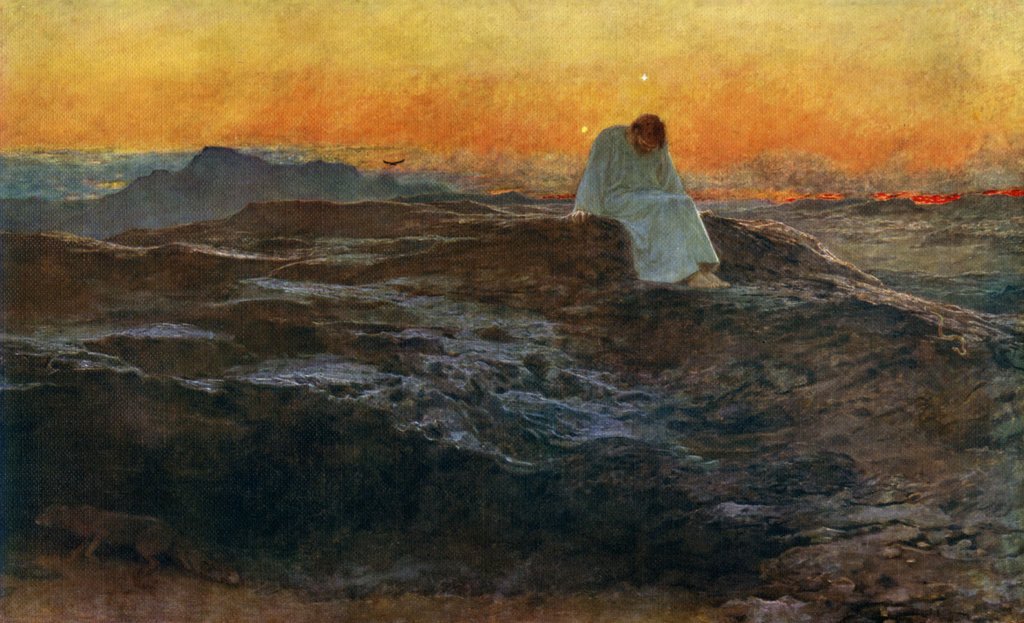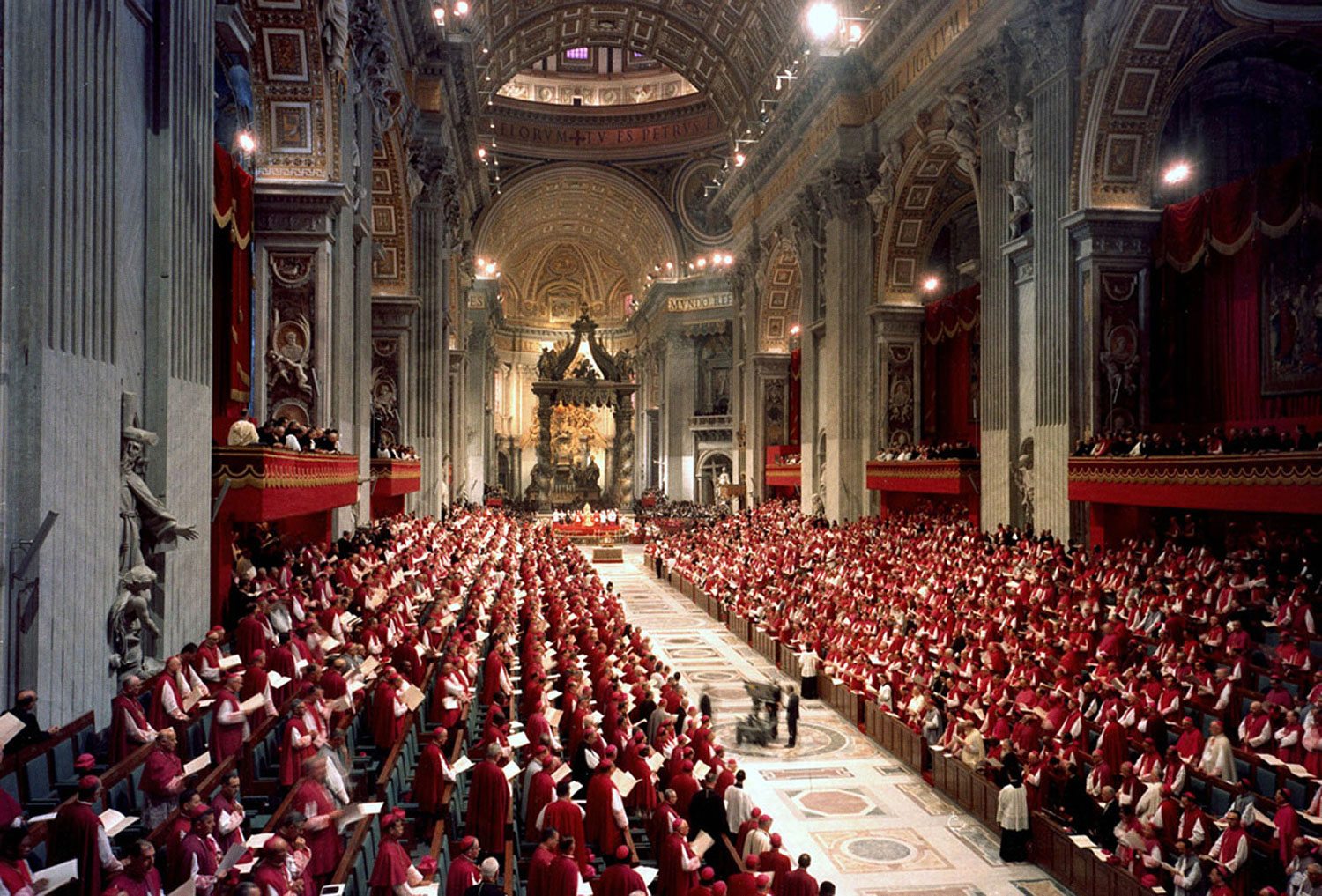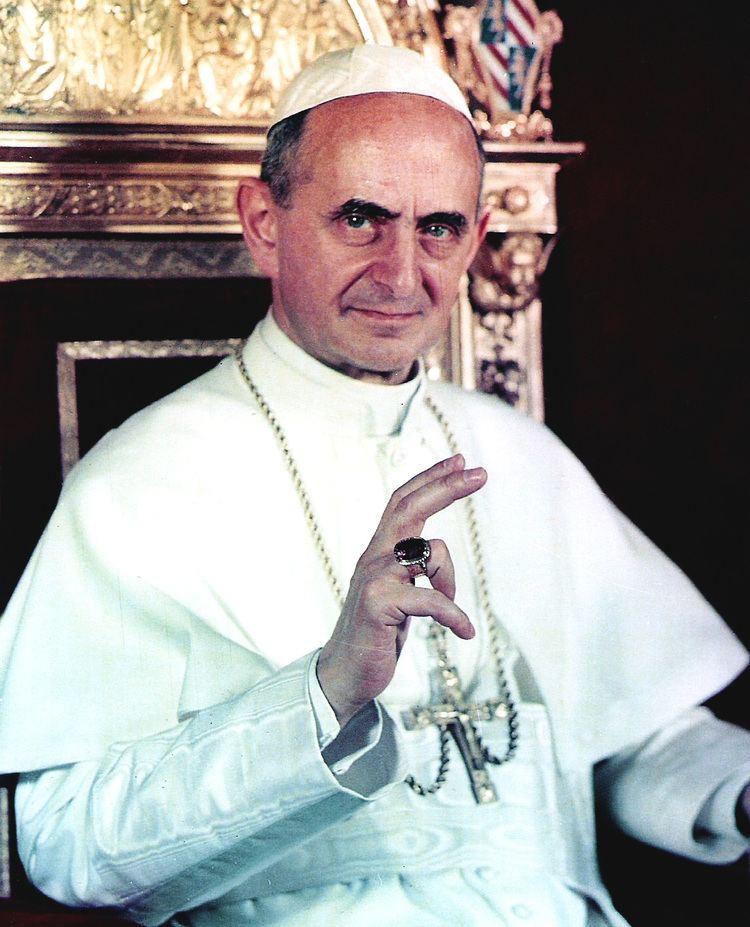This is the second part of an article by Fr Jean-Pierre Herman on the blessing of oils, which is traditionally celebrated at the Mass of the Lord’s Supper, and the recent reforms thereof; the first part was published on Tuesday. The French original was published on Sunday on the website of the Schola Sainte-Cécile as a single article. Fr Herman is professor of liturgy at the Good Shepherd Institute’s Séminaire Saint-Vincent de Paul in Courtalain, France, and we repeat our gratitude to him for sharing this English translation with NLM. The images are reproduced with the kind permission of the Schola Sainte-Cécile.
A ritual overload foreign to tradition
Over and above these strictly liturgical changes, the Chrism Mass has become a condensed version of conciliar ecclesiology: a celebration of the People of God, an expression of communion between the bishop and his priests, a renewal of ministries and, in some dioceses, even a renewal of diaconal promises.
 |
| Mons. Leon Gromier |
Among the most enlightened critics of this change is Mgr Léon Gromier. A pontifical ceremonial officer and great connoisseur of the Roman rites, Mgr Gromier firmly denounced the reform of Holy Week in 1955, which he described as a “subversion of Roman tradition under the pretext of restoration.”
With regard to the Chrism Mass, he pointed out a double contradiction: on the one hand, the dislocation of the link between the Eucharistic sacrifice and the consecration of the oils, and on the other, the introduction of new structures with no traditional foundation. In particular, he criticised the idea of a separate Mass for the blessing of the oils, stating that “never in the Roman tradition has chrismation been separated from the very heart of the Sacrifice of the Mass” . For him, any attempt to make this Mass an autonomous ecclesial event risked transforming an act of sacramental sanctification into an institutional event, thereby losing the profound meaning of the rite.
Annibale Bugnini justifies this transformation:
The idea of making the Chrism Mass a ‘priestly feast’ was an intuition of the Pope... A new and attractive element was added in 1965: the concelebration of the Eucharist...
With this in mind, the Chrism Mass was rethought as a collective celebration of the ordained ministry. According to Bugnini, the liturgy had to become the living image of the mystery of the Church and make visible the communion of the presbyterate around the bishop. Thus, the strictly sacramental elements were gradually surrounded by new symbols, mainly aimed at highlighting ecclesial unity and the identity of the diocesan clergy.
 |
| Annibale Bugnini, architect of the post-Conciliar reform. |
This change was accompanied by a ritual and symbolic overload. The blessings of the oils are inserted into a complex liturgical development, which now includes: the renewal of priestly promises, any commitments of deacons, processions with the oils, acclamations sung by the congregation, narrative presentations of the ministries in the diocese, and gestures of collective homage to the bishop. Far from constituting a homogeneous enrichment, this accumulation of signs creates symbolic competition, in which the sacramental mystery is often overshadowed by the celebration of conciliar ecclesiology.
Bugnini himself describes its contrasting reception:
The most severe liturgists were reluctant to accept the fact. They resigned themselves reluctantly to saying goodbye to the centuries-old liturgy that wove the Missa chrismatis around the consecration of the oils.
The introduction of the renewal of priestly promises, a rite that was completely new to the Roman tradition, reinforced this communal and affective orientation. Bugnini states:
The renewal of priestly vows on this special day is a strong, long-awaited, almost necessary gesture to publicly reaffirm the bond between the priest and his bishop, and their fidelity to their mission.
In several dioceses, this practice has been extended to deacons, who also renew their liturgical commitments. This development, not foreseen by the rubrics, blurs the hierarchy of orders and tends to transform a priestly rite into a simple celebration of the local Christian community. The sacramental meaning is thus buried under an avalanche of pastoral gestures and speeches.
Added to this is the content of episcopal homilies, which are often far removed from any doctrinal explanation of the sacraments and their efficacy. Many bishops choose to focus their preaching on pastoral assessments, calls for diocesan unity or community exhortations, thereby relegating the sacramental dimension to the background. The Chrism Mass then becomes an exercise in ecclesial communication, sometimes political, to the detriment of mystagogy and liturgical catechesis.
This overload seriously undermines the sacramental clarity of the rite. What was intended by Pius XII to be a sacramental catechesis becomes a celebration of institutional identity. Instead of demonstrating the sacraments’ dependence on Christ’s sacrifice, the rite tends to express, above all, the self-celebration of the local Church and its ministers. The liturgical word is fragmented into multiple discourses, often anecdotal or circumstantial, losing sight of the profound unity of the sacred action centred on Christ and his Cross.
Bugnini himself insists on this turning point:
It was worth sacrificing a traditional preference [...] in order to highlight the visible communion of the presbyterate around its bishop, in a liturgy fully adapted to the new times.
This statement sums up the logic of the reform: to abandon the sacramental symbolism inherited from centuries of tradition to make way for a new liturgical rhetoric, based no longer on mystery but on ecclesial visibility. of the rite: instead of a pedagogy of grace, there is an emphasis on affective communion, sometimes to the detriment of doctrine. The liturgical word is fragmented into multiple discourses, often anecdotal or circumstantial, losing sight of the profound unity of the sacred action centred on Christ and his Cross.
The urgent need to find the source
 |
| Pope St Alexander I consecrating the holy oils, in an image from a manuscript dated 1300-10. According to a medieval tradition, it was Alexander, the 5th successor of St Peter (reigned ca. 105-15) who instituted the rite of consecrating the oils on Holy Thursday. |
The shift of the Chrism Mass from a sacramental epiphany centered on Christ’s sacrifice to a community celebration with an identity function reflects a profound evolution in contemporary liturgical theology. This shift is not purely formal, but goes to the very heart of the liturgy: its purpose, its language and its theological structure.
While Pius XII, with a clear desire for pedagogical reform, wanted to offer the faithful a liturgy that was profoundly Eucharistic and catechetical, the post-conciliar reforms gradually replaced this logic with a horizontal conception of the liturgy. The liturgy is now presented as a manifestation of ecclesial communion, centred on the bishop and his presbyterate, to the detriment of the catechesis of the sacraments. Josef Ratzinger - the future Benedict XVI - rightly noted:
What was once turned towards God has gradually turned in on the community. Community self-celebration has replaced the act of worship.
This withdrawal is particularly evident in the modern Chrism Mass, where the episcopal preaching no longer focuses on the nature and power of the sacraments, but on pastoral concerns, diocesan assessments or calls for synodality. The bishop becomes less the sacramental minister of Christ than the visible animator of a community on the move.
The liturgist Mgr Klaus Gamber, in his prophetic writings, was already denouncing this development:
Instead of looking at the organic development of the liturgy, new office-born rites have been introduced, cut off from any living tradition and oriented more towards ideology than faith.
Thus, what Pius XII had conceived as a catechetical liturgy, centred on the sacramental grace deriving from the one sacrifice of Christ, was gradually transformed into a symbolic manifestation of an ecclesial communion conceived above all as visible, participative and ministerial. The gradual erasure of the link between the Eucharist and the sacraments, the dilution of theological language in orations, and the inflation of symbolic gestures based on a horizontal ecclesiology have emptied the rite of its mystagogical density.
The time has come to restore the original significance of the Chrism Mass as a sacramental act within the sacrifice of Christ, the source of all anointing and sanctification. The traditional rite offers a sober, majestic expression of this, doctrinally rigorous and spiritually fruitful. Restoring it does not mean going backwards: it means re-establishing a vital link between the sacraments and their Eucharistic source, between liturgical action and the redemption of the world.
To serve liturgical truth is to honour the Paschal Mystery of Christ, celebrated in his Church with fidelity, sobriety and faith.
Bibliography
1. Liturgical and historical sources
G DURAND, Rationale divinorum officiorum, ed. A. Davril & T. Thibodeau, Turnhout, Brepols, 1995.
Pontificale Romanum (ed. 1595-1596), republished by Libreria Editrice Vaticana.
Gelasian Sacramentary, ed. H. Wilson, The Gelasian Sacramentary, Oxford, 1894.
Gregorian Sacramentary, ed. Dag Norberg, Paris, CNRS, 1985.
Ordo Romanus I, ed. M. Andrieu, Les ordines romani du haut Moyen Âge, vol. III, Louvain, 1951.
2. Historical and critical studies
H. SCHMIDT, Die Formularien der Chrisammesse in den alten römischen Sacramentarien , Ephemerides Liturgicae, vol. 71, 1957, pp. 733-736.
L. GROMIER, Commentaires sur la réforme de la Semaine Sainte, in: Ephemerides Liturgicae (various articles, years 1951-1962).Ephemerides Liturgicae (various articles, years 1951-1962).
A. BUGNINI, La réforme de la liturgie 1948-1975, trans. fr. P.-M. Gy, Cerf, 1998.
K. GAMBER, La Réforme liturgique en question, DMM, 1992.
J.-F. Thomas, La liturgie: art sacré, théologie et vie mystique, Via Romana, 2017.
3. Liturgical theology and mystagogy
J. LECLERCQ, La Semaine Sainte dans la liturgie romaine, Solesmes, 1951.
L. BOUYER, Le Mystère pascal, Cerf, 1945.
P. GUÉRANGER, L’Année liturgique. Le Temps de la Passion et la Semaine Sainte, Solesmes.
J. RATZINGER (Benedict XVI), The Spirit of the Liturgy, Ad Solem, 2001.
J. HANI, Le symbolisme du culte chrétien, L’Âge d’Homme, 1995.






.jpg)

























